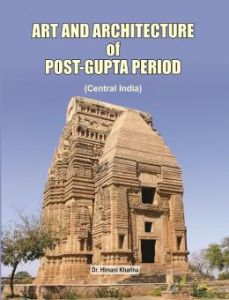
Contents: Preface. 1. Introduction. 2. The temples of Naresara and Batesara. 3. Teli-ka Mandir and temples at Amarol. 4. Temples at Padaoli, Suhania and Mitaoli. 5. Sas, Bahu and other temples in Gwalior fort. 6. Isolated sculptures. 7. Defense and castle architecture in Gwalior fort. Conclusion. Appendices. Glossary. Bibliography. Index.
A study confining largely to monuments at Batesara, Naresara, Amarol, Padaoli, Mitaoli, Suhania, within fifty kilometers around Gwalior in Central India, and Gwalior, the Art and Architecture of post Gupta period, rightly called the light in an era of darkness, is a brilliant effort at discovering how the creative hands of artisans carried forward the touch and illumined the darkness which after the fall of the Gupta Empire had enshrouded the land. It focuses mainly on academic evaluation of the art and architecture of the region: temples cave rock cut and structural, defense structures, palaces and casteless, isolated sculptures, tanks baoris etc., determining in details their chronology, role in overall stylistic evolution, and their dynastic classification, especially of the temples usually designated as Pratiharas, in view that some of these temples has been constructed well before Pratihara dynasty had come into being. Apart, history does not place Pratiharas among temple building dynasties, Guptas, Chandelas, Vakatakas, Rashtrakutas, Chalukyas and others. Perhaps the two three hundred years of waning polity, fractured rule, betrayals, apprehensions, uncertainties and upheavals that followed the fall of Gupta Empire was hardly a period when kings could think of commissioning temples, at least not on Batesara or Naresara like massive scale.
Art and Architecture of Post Gupta Period raises and attempts at resolving many other related questions as to who built these well evolved temples, hundreds of them, two hundred at a single site like Batesara, within a century and a half after the death of Harshavardhana, the last of the Great Guptas, when the scepter-holding hands were subjugated and struggled for survival. It re-interprets the co-relation between art and history, the two reciprocal disciplines, discovering in the style of architecture conformity to a contention of history and in a historical claim the distinction of an architecture style. It sometimes views art as reflecting a mental state ethic histories do not reveal so effectively. In their effort at distancing the style of their temple architecture from that of Candela temples, the most celebrated idiom of temple architecture widely pursued those days the aversion of Kachchapaghat rulers towards Candelas more powerfully reveals than it does in a statement of history and all without any kind of acrimony. (jacket)